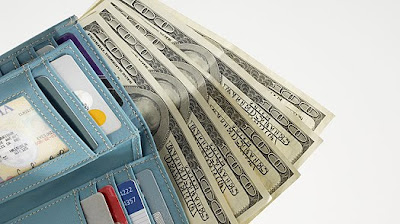Have Consumers Become More Frugal?
The Federal Reserve Bank of New York released its Quarterly Report on Household Debt and Credit for the third quarter of 2010, which shows that consumer debt continues its downward trend of the previous seven quarters, though the pace of decline has slowed recently. Since its peak in the third quarter of 2008, nearly $1 trillion has been shaved from outstanding consumer debts.
Additionally, this quarter’s supplemental report addresses for the first time the question of how this decline has been achieved and notes a sharp reversal in household cash flow from debt, indicating a decrease in available funds for consumption.
More HERE.

Quoting the American Consumers Newsletter: At the household level, the Consumer Expenditure Survey shows the same pattern. Household spending peaked in 2006 at $51,688. In 2008, the average household spent $50,486, or $1,200 less after adjusting for inflation. On many categories of products and services, the average household reversed the direction of its spending in the 2006-08 time period compared with the 2000-06 time period. Here are the 10 most telling U-turns in consumer spending, cf 2006 w 2006-2008:
1. RESTAURANTS: +8 percent to -6 percent. Americans are spending more on groceries.
2. MORTGAGE INTEREST: +21 percent to -5 percent. No age group has been hit as hard as 35-to-44-year-olds.
3. STATIONERY AND GIFT WRAP: +15 percent to -11 percent. Is there anything more discretionary than gift wrap?
4. DAY CARE: +16 percent to -8 percent. As the unemployment rate climbed, spending on day care fell.
5. FURNITURE: +1 percent to -22 percent. Houses were selling furiously during the housing boom, but spending on furniture was surprisingly lackluster.
6. HOUSEHOLD TEXTILES: +24 percent to -23 percent Towels, sheets, blankets, curtains.
7. BABY CLOTHES: 0 percent to -9 percent. When the recession set in, the number of births began to fall, and so did spending on baby clothes.
8. DRUGS: +6 percent to -12 percent. Behind the decline is the Medicare Prescription Drug Plan, which went into effect in 2006.
9. ADMISSIONS TO ENTERTAINMENT EVENTS: +1 percent to -5 percent During the downturn, households continued to spend on high-definition television sets. But they cut back on other entertainment categories.
10. CASH CONTRIBUTIONS: +34 percent to -13 percent. Donations to charities are plummeting, says the Chronicle of Philanthropy.
American consumers spent $330 billion a year in borrowed dollars between 2000 and 2007, according to the Fed study. Now those dollars--and many of the businesses they built--are gone for good.
Additionally, this quarter’s supplemental report addresses for the first time the question of how this decline has been achieved and notes a sharp reversal in household cash flow from debt, indicating a decrease in available funds for consumption.
More HERE.

Quoting the American Consumers Newsletter: At the household level, the Consumer Expenditure Survey shows the same pattern. Household spending peaked in 2006 at $51,688. In 2008, the average household spent $50,486, or $1,200 less after adjusting for inflation. On many categories of products and services, the average household reversed the direction of its spending in the 2006-08 time period compared with the 2000-06 time period. Here are the 10 most telling U-turns in consumer spending, cf 2006 w 2006-2008:
1. RESTAURANTS: +8 percent to -6 percent. Americans are spending more on groceries.
2. MORTGAGE INTEREST: +21 percent to -5 percent. No age group has been hit as hard as 35-to-44-year-olds.
3. STATIONERY AND GIFT WRAP: +15 percent to -11 percent. Is there anything more discretionary than gift wrap?
4. DAY CARE: +16 percent to -8 percent. As the unemployment rate climbed, spending on day care fell.
5. FURNITURE: +1 percent to -22 percent. Houses were selling furiously during the housing boom, but spending on furniture was surprisingly lackluster.
6. HOUSEHOLD TEXTILES: +24 percent to -23 percent Towels, sheets, blankets, curtains.
7. BABY CLOTHES: 0 percent to -9 percent. When the recession set in, the number of births began to fall, and so did spending on baby clothes.
8. DRUGS: +6 percent to -12 percent. Behind the decline is the Medicare Prescription Drug Plan, which went into effect in 2006.
9. ADMISSIONS TO ENTERTAINMENT EVENTS: +1 percent to -5 percent During the downturn, households continued to spend on high-definition television sets. But they cut back on other entertainment categories.
10. CASH CONTRIBUTIONS: +34 percent to -13 percent. Donations to charities are plummeting, says the Chronicle of Philanthropy.
American consumers spent $330 billion a year in borrowed dollars between 2000 and 2007, according to the Fed study. Now those dollars--and many of the businesses they built--are gone for good.
Comments